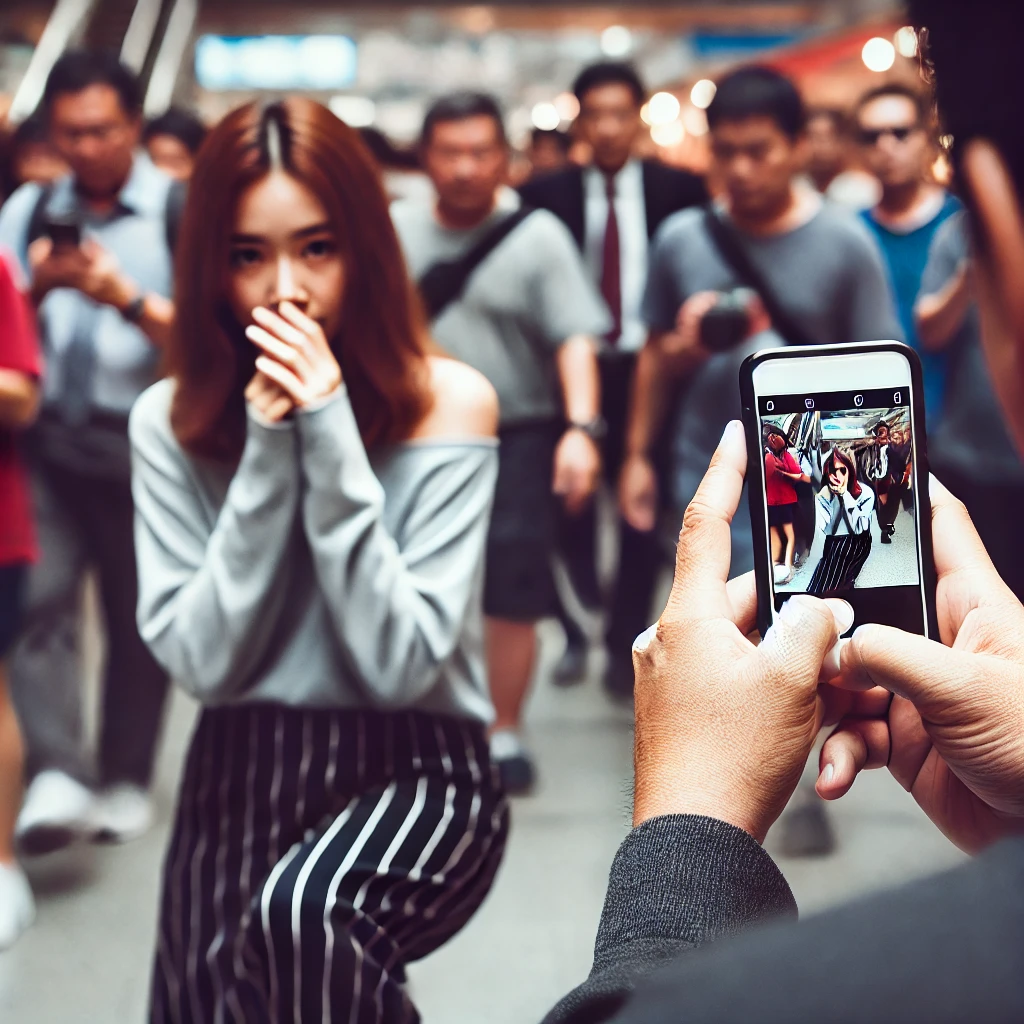In today’s digital age, the act of capturing photographs has become ubiquitous, with smartphones making it easier than ever to document moments. However, this convenience has also given rise to concerning behaviors, particularly the unsolicited photographing of women in public spaces such as buses and trains. This issue not only infringes upon personal privacy but also contributes to a broader culture of disrespect and objectification.

The Growing Concern
Instances of men taking photos of women without consent in public transportation settings are increasingly reported. For example, a woman shared her experience of being secretly filmed in a gym by a man wearing spy glasses, later discovering the footage on TikTok, where it had been viewed by 50,000 people. Similarly, a man was reported to have behaved indecently on a train, allegedly flashing and recording a woman during rush hour. These incidents highlight a disturbing trend where individuals exploit public spaces to invade personal privacy.
The Impact on Women
The repercussions of such actions are profound. Women subjected to unsolicited photography often experience feelings of violation, discomfort, and a diminished sense of safety. The pervasive nature of smartphones means that these images can be disseminated widely, leading to potential harassment and long-term emotional distress.
Legal and Ethical Considerations
While laws vary by jurisdiction, in many places, taking photographs in public spaces is legal. However, ethical considerations are paramount. The act of photographing someone without their consent, especially in a manner that is covert or invasive, raises significant ethical concerns. In some cases, such actions may also violate laws related to harassment or voyeurism.
What Can Be Done?
Addressing this issue requires a multifaceted approach:
• Public Awareness: Educating the public about the implications of unsolicited photography can foster a more respectful environment.
• Legal Reforms: Advocating for stronger laws that protect individuals from unauthorized photography can provide legal recourse for victims.
• Technological Solutions: Developing and implementing technologies that can detect and prevent covert photography can be a proactive measure.
• Support Systems: Establishing support networks for victims can aid in their recovery and encourage reporting of such incidents.
Conclusion
The unsolicited photographing of women in public spaces is a serious issue that demands attention. By fostering awareness, advocating for legal reforms, and supporting victims, society can work towards creating safer public environments for everyone.
Suggested Taglines:
1. “Protecting Privacy: Combating Unsolicited Photography in Public Spaces”
2. “Safeguarding Women: Addressing Covert Photography in Public Transport”
3. “Privacy Matters: Standing Against Unauthorized Photography of Women”
4. “Empowering Women: Tackling the Issue of Unsolicited Public Photography”
5. “Respecting Boundaries: The Fight Against Covert Photography in Public”
Image Suggestions:
1. A woman looking uncomfortable while a man covertly takes her photo in a public setting.
2. A close-up of a smartphone camera lens, symbolizing the act of unauthorized photography.
3. A group of women standing together, representing solidarity against unsolicited photography.